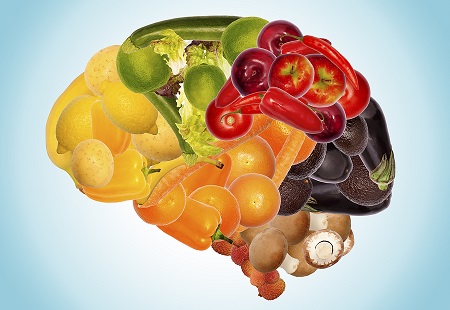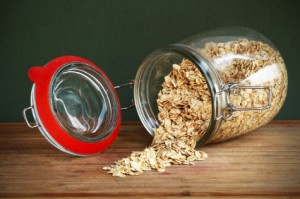

If your brain can’t be with the food it loves, it will learn to love the food it’s with.
Fast.
The bad news is, many of us are addicted to food that doesn’t love our bodies or our brains the way it should. A lot of processed food dramatically increases our chances of obesity, diabetes, heart disease, cancer and Alzheimer’s. To name only a few serious health problems.
Addiction is a terribly loaded word, but it’s also accurate. We eat a lot of highly processed food products that are designed to slide down our mouths into our stomachs, without a lot of chewing. These products are also very calorie dense, so they don’t stretch our stomachs. The result is that our bodies don’t register the sensation that we’ve eaten. And these “foods” are carefully optimized with salt, sugar, fat, artificial flavors and other chemicals so that it’s almost impossible for us to eat just one. These ingredients light up the brain’s pleasure receptors like a fireworks display. The neurological activity is so vivid, you can see it on an MRI.

It’s a simple fact. No matter how much we love sweet red pepper strips (you know, at that perfect ripeness where they are such a dark—almost velvet—red) drizzled with homemade seasonings like garlic mayonnaise (incredibly easy: see a recipe at the end!), most of us don’t feel compelled to eat every last strip. And we don’t go through withdrawal cravings that make us guzzle down olive oil, salt and some raw garlic cloves, with more red pepper strips for good measure.
Compare this to how we feel when confronted with a bag of our favorite chips or cookies. Unless we’re extremely strong-willed, that bag is likely to be demolished on the spot. And trying to detox from sugar can trigger acute cravings. When we make something for ourselves we flavor it to our taste. What we don’t do is carefully formulate it to overwhelm our ability to say, “Thanks, that was wonderful, but I’m full now. (https://www.riverbendresort.us/) ”
The good news is, your brain loves food—so it’s not particular. You can retrain it to love natural food, rather than a concoction of chemicals that kinda-sorta looks and tastes like the real stuff and is engineered to make you overeat.
Here’s how:
- Clean out your home and, if possible, your work place. Cookies, soda, ice cream, chocolate—it all needs to go, or at least be evacuated to a “safe” location. If you can’t get at it, you can’t eat it.
- Don’t allow yourself to get hungry. Hunger is when the cravings happen.
- Eat a diet high in fiber and protein and low in processed, fast-digesting carbohydrates, i.e., favor fruit and nuts over refined breads and sugars. This stabilizes your blood sugar and makes you feel full, longer.
- Snack between meals. Each snack (or mini-meal) should pair a protein (like nuts or nut butter or cheese) with a fruit or complex carbohydrate, like sprouted whole grain (SWG) crackers.
- Eat snacks and meals you enjoy. By doing this, you deliberately associate the concepts of “healthy” and “tasty” with each other in your mind.
- When you crave something sweet—eat something sweet, like a piece of fresh fruit. No, watermelon may not be chocolate for everyone, but it will shut up the sugar demon. And it has its own pleasure to be savored.
- Always have a stash of good foods in your bag or briefcase. We’re overwhelmed with food cues telling us to eat and sometimes it can be hard to resist them. Make eating good food easy, whether it’s a hard-boiled egg, a banana, some cherries and walnuts…
- Avoid all craved foods for two weeks (three is better). Then gradually start introducing a small amount in the middle of a meal. That way, you don’t train your brain to anticipate chocolate, for example, as dessert. Whatever you do, don’t eat these craved foods at the beginning of a meal: you want to avoid conditioning your brain to think of them as the solution to hunger.
It takes about 6 months to rewire your brain to crave healthy foods, but the payoff—increased energy, improved health, reduced aches and pains, and lost weight—is well worth it.
To learn more about how to choose the right foods using our menu planner, click here.
And here’s how to make the perfect mayonnaise. After this, you’ll never buy the fake stuff again.
Garlic Mayonnaise (Aioli) Without Tears
Requirements
- 1 (+back-up, if needed) organic omega-3, pastured or pasteurized fresh egg yolk, room temperature
or 1-2 Tbsp. / 10-20 g whole flaxseed + ½-¾ cup / 120-180 ml warm water - 2 tsp. / 10 ml fresh-squeezed lemon juice
- 1 tsp. / 5 ml vinegar or prepared mustard of your choice (omit mustard if using mustard seed oil*)
- 1 tsp. / 5 ml cold water
- 2 or more cloves garlic, grated, mashed or finely chopped
- ¼ tsp. / 1 g kosher or mineral-rich salt
- ¾ cup / 180 ml** neutral oil, such as organic canola/rapeseed
* or ½ cup / 120 ml neutral oil + ¼ cup / 60 ml mustard seed oil - 1-3 Tbsp. / 15-45 ml flavor-rich oil such as extra-virgin olive, hazelnut, macadamia, or walnut (optional)
- Electric whisk
- Squeeze bottle or turkey baster
- iPod®, MP3 player, radio or similar hands-free device
Instructions
- Fill the squeeze bottle/baster with oil and set aside.
- For egg-free mayonnaise, make flaxseed gel to substitute for the yolk: grind the flaxseed with the warm water for 15 seconds, then strain the gel through a wire colander.
- In a medium bowl, blend together the egg or flaxseed gel, lemon juice, vinegar or mustard, salt, cold water and garlic with an electric whisk, until frothy.
- While continuing to whisk—and listening to the news, your music or book-on-MP3—add the oil, drop by drop, until you have a thick, emulsified base. Get some dance moves going to add in a little fat-burning.
Note to egg-users: It is natural to get bored and start adding more oil too fast. If you do, your mayonnaise will “break” and you will have a sad mess of partially emulsified egg yolk and oil.
To salvage “broken mayonnaise”:
- In a separate mixing bowl, beat a second egg yolk with your blender until it looks a little “sticky.”
- Add the “broken” egg-and-oil mixture one teaspoon at a time.
- Make sure each teaspoonful is completely incorporated and emulsified before you add another.
- Now, continuing to blend constantly, add the remaining oil in a thin stream.
- Finish by blending in a tablespoon or 3 of extra-virgin olive oil, walnut oil, macadamia nut oil, hazelnut oil, etc., depending on your taste.
- Adjust salt.
Makes approximately 1 cup of real, fresh mayonnaise.
Store covered in the refrigerator and use within a week: it is preservative-free.
If you have a compromised immune system, check with your physician about the wisdom of eating raw egg yolk. However, the risk is very small if you are using fresh, pasteurized or genuine organic or free-range eggs.
Variations
- To make saffron aioli, like that served in a Marseilles bouillabaisse, soak a pinch of saffron in a ¼ tsp. of warm water, then blend that water into the garlic aioli.
- For plain mayonnaise, omit the garlic.
- For more or less mustard taste, add more or less.
- For a fish or seafood sauce, add more lemon.
- For tartar sauce, add about ½ cup of finely-chopped pickles.
- **For “lite” mayonnaise, substitute part of the oil with plain, tart, unsweetened yogurt to taste (if using dairy yogurt, drain it of whey).
Enjoy!
Learn which 5 foods to avoid at all costs right here!
Comments 4
Leave a Reply
You must be logged in to post a comment.




This site is wonderful! It teaches me all the tricks!
I can drink a lot of soda in one week. It adds up. One for lunch, one in evening with a snack and before I know it I m drinking over a twelve pack every week. I started to retrain my brain by grabbing a bottle of water and eating a little orange instead of the soda. Its working. I’m shaving off over 1500 calories a week.
Three weeks ago I went cold turkey from sugar, white flour, and coffee. I did not get the side effects I thought I would. That was answered prayer. This article has enlightened me that it will take 6 months to rewire my brain to crave healthier foods. To new beginnings and transitions!!
My first log in. This recipe looks delicious. Thank you.